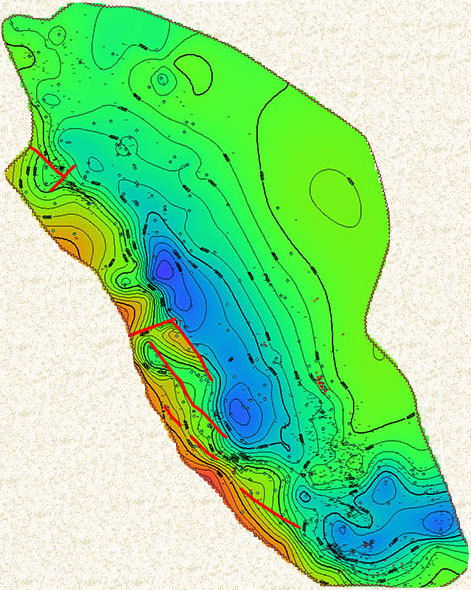

GEOLOGICAL SERVICES:
Working Together With Petrophysics and Engineering
Several of our senior professionals are both very experienced E&P geologists and expert petrophysicists. This rare combination of skills makes them better in both disciplines. With an in-depth understanding of rocks and geological processes, we build improved petrophysical field study models. Having a comprehensive understanding of log responses, we provide more effective support to engineering functions such as development planning, reservoir surveillance, production optimization, and simulation.
The geological framework of structure and stratigraphy is the basis for the reservoir model, but that is not all that comes out of geology. It is the geologist's intuitive understanding of the rock fabric and distribution of the facies within the reservoir that provides the critical insight for modeling and managing the resource. Each of the facies is characterized by values of porosity, permeability, and fluid saturation, which must be translated from the geological knowledge of the rocks into quantitative values for engineering studies. This is the vital role of petrophysics, which we believe is best done by log analysts who posess a strong background in geology.
Merging geology with petrophysics and engineering data leads to far better reservoir characterization and geomodeling, but as we have seen on some projects, the level of understanding between disciplines in team projects is sometimes not as high as it should be. To fill this need, we developed our new Master Class in Reservoir Characterization. In this course, we present a workflow for more effective data sharing between geologists/geophysicists, petrophysicists, and engineers for a more accurate and comprehensive reservoir model.